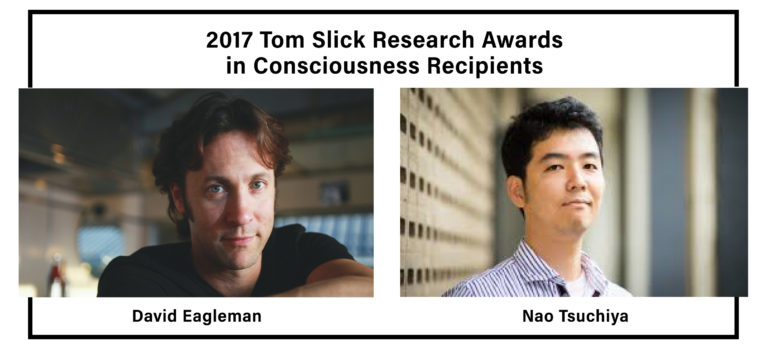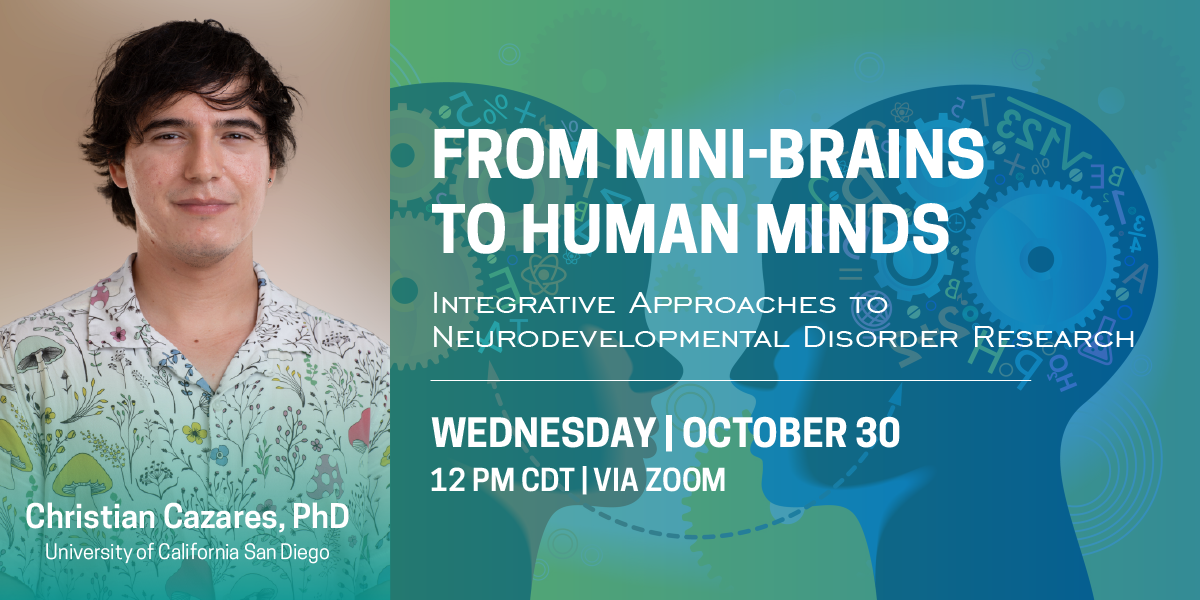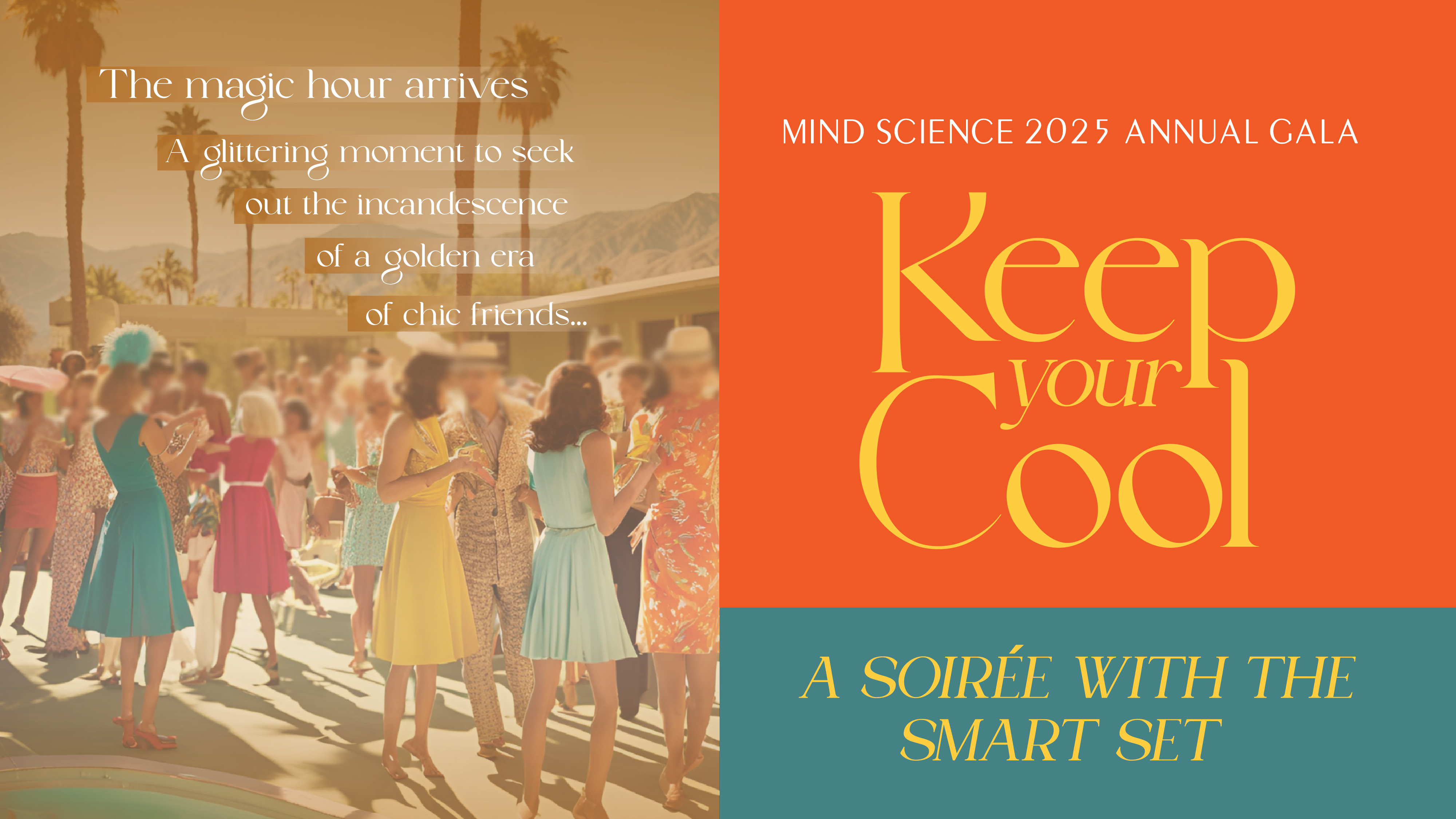2017 Tom Slick Research Awards in Consciousness

Mind Science Foundation’s Scientific Advisory Committee recently met to name the awards for the 2017 Tom Slick Research Awards in Consciousness. This annual award celebrates the MSF’s longtime commitment to funding innovative research focused on the mind, brain and human consciousness, all with the goal of improving the human condition. The focus on human consciousness seeks to explain how how the everyday inner workings of our brains give rise to a single cohesive ‘reality’ and a sense of an individual ‘self.’ Researchers this year came from the Center for Law and Science and Monash University, with one investigation using gamified neuropsychological tests to test variation between human minds; and another, using rarely available intracranial recordings of neural activity in epilepsy patients, to test theories of consciousness.
Understanding the natural variation human minds
David Eagleman, Ph.D.
Center for Science and Law
Can we tie details of someone’s decision making patterns directly to past and future behavior? The purpose of this study is to explore and characterize the range and variation of conscious and unconscious traits associated with decision making. We will finalize development of an in-house portable test that contains a suite of interactive assessments. These gamified neuropsychological tests quantify participants’ decision-making characteristics. In particular, we will conduct an exploratory analysis to assess participants on aggression, empathy, executive function, impulse-control, set shifting, and planning. By bringing together a diverse set of expertise with the single goal of understanding the spectrum of consciousness, the project anticipates results that are meaningful across the contributing disciplines.
Our battery of tests bears on a fundamental, but mostly unexplored dimension of human behavior: how much difference is there between individuals? Do these conscious and unconscious traits cluster, or are they evenly spread? The proposed study offers an opportunity to tie details of individual decision making directly to past and future behavior, yielding a deeper understanding and more realistic range of the variability of human decision making.
Testing theories of consciousness with no-report paradigms in human intracranial recording
Naotsugu Tsuchiya, Ph.D. (Monash University), Andrew Haun, Ph.D. (University of Wisconsin), Hiroto Kawaski, Ph.D. (University of Iowa), Giulio Tononi, Ph.D. (University of Wisconsin)
Investigating the hard problem of consciousness research – can we tie consciousness to a particular group of neurons in the brain? Consciousness is central to life: Everything we see, hear, feel and know is through the lens of conscious experience. Yet, we still do not know how consciousness is generated by the brain. The material basis of consciousness is one of the oldest philosophical questions, sometimes known as the Hard Problem of consciousness, and it remains one of the most difficult problems in science. Over the last 25 years, cognitive neuroscientists have focused on finding the neural activity that strongly correlates with the contents of conscious perception (or ‘conscious percepts’), and the accumulating data has driven the development of a multitude of new theories of consciousness. The two most prominent theories to emerge are the Global Neuronal Workspace (GNW) and Integrated Information Theory (IIT). While these two theories have been debated for more than a decade, the project we propose here will be the first to directly assess them simultaneously using an empirical research paradigm. In our project, we propose a critical experiment, in which the two theories diverge in their predictions regarding the neuronal interactions that should be observed during conscious percepts. Specifically, GNW, which supposes the executive functions to be critical for consciousness, predicts the crucial involvement of prefrontal cortex in generation of conscious percepts. IIT, on the other hand, which claims that integration of information is essential for consciousness, does not treat the prefrontal cortex as special and predicts that integrated interactions within sensory areas are sufficient for conscious percepts. To obtain the necessary spatiotemporal resolution for causal analyses as well as the spatial coverage of brain data, we will utilize rare intracranial recordings of neural activity in epilepsy patients, who are implanted with electrodes for the purpose of epilepsy monitoring and treatment. Critically for our project, we will modify an existing “no-report” experimental paradigm to make it suitable for our purpose, where we can reliably infer a subject’s conscious perception without requiring them to report it. Since perceptual reports are known to involve the prefrontal cortex, the no-report paradigm is critical for strictly examining the role of prefrontal cortex in conscious experience. By quantitatively contrasting the two most promising theories of consciousness in an experimental condition where they clearly diverge, we will be setting up a new empirical testing ground for consciousness, advancing the science of consciousness into a new stage. This kind of empirical assessment will mature and refine the theories of consciousness. Such theories will eventually help us develop beneficial clinical and engineering technologies, such as monitoring device for consciousness in people who cannot speak, or even animals, as well as novel algorithms for artificial intelligence with which it can make efficient decisions without much prior data.



